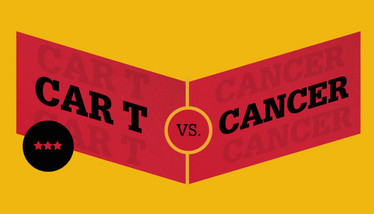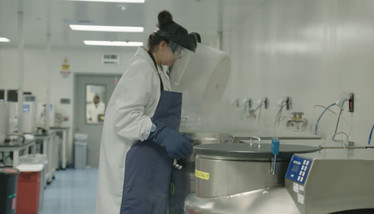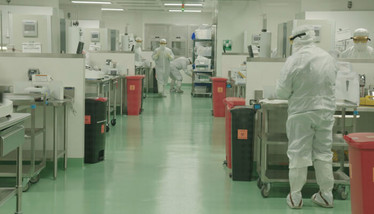
CAR T Cell Therapy: Redefining Quality
With CAR T cell therapy, quality takes on a whole new meaning. Bethany Dudek, Executive Director, Quality Head Europe at Kite, walks us through the challenges involved in ensuring CAR T cell therapies are delivered to patients safely and as quickly as possible.
Bethany Dudek | | Longer Read

Bethany Dudek is Executive Director, Quality Head Europe, Kite, USA
I have worked in quality for both traditional biotech and pharma companies (as well as in manufacturing and technology transfer), and I’ve found that there is often a disconnect between what quality does and what the other departments do – they’re seen as very separate parts of the business. With CAR T cell therapy, everything is connected and the role is much broader. For example, at Kite, I am responsible for all aspects of quality for the cell therapy products that we supply in Europe. My role spans QC release, qualifying the infusion centers that administer the product, various aspects of building the new manufacturing plant, various records and documents, as well as oversight of the distribution networks. This presents many challenges. When thinking about the quality journey of a CAR T cell therapy, the first and most obvious challenge is that each batch is autologous (specific to each patient). This means ensuring that the chain of custody is watertight from the moment the product leaves the patient to the moment it is reintroduced to the patient.
Digitalization of this supply chain information can be a significant help from a quality perspective. We’ve created a patient portal for our products, which we use to track patient material and interface with our customers. This gives us oversight of the whole process. We understand how the chain links together and have identified key performance indicators that we check to ensure everything is happening as it should be along the supply chain. We also use qualified vendors to transport products from our approved hospitals to the manufacturing site. The infusion centers know how to receive the product, how to confirm that it has been shipped without issue and that they can receive it safely and prepare the patient for administration of our product. All of this is integrated into the patient portal, which interfaces with our internal IT system, allowing us to track everything along the way and react to anything unexpected.

This is a world away from the traditional scale-up manufacturing model, where you manufacture to an inventory target. There, if you need more product, you simply add more and larger bioreactors and columns. And from a quality point of view, consistency and characterization is the name of the game – with everything you’re working with. With a CAR T cell therapy, your product is inherently variable and you must build that into your quality systems to the best of your ability.
Another thorny issue is testing: the methods we use are very complex. These aren’t the typical tests seen in a traditional pharmaceutical manufacturing facility. Only highly trained staff are able to carry out those methods – and such people are in high demand (as was discussed in The Medicine Maker’s December feature with ISCT) (1). At Kite, we spend a lot of time training staff and ensuring a deep understanding of the scientific reasons behind testing in a certain way.
Testing and other ATMP requirements are quite similar in the US and EU. There are, of course, some nuances, but overall they are aligned on a lot of the concepts and messaging. Within Europe, things can be a little more challenging because individual countries have their own local requirements or specific questions regarding CAR T cell therapy. This has a lot to do with the knowledge base within a country and whether there are already cell and gene therapies available. We work closely with our local affiliates to address any issues.

Need for speed
Speed is the name of the game when it comes to CAR T cell therapy manufacturing. As Dick Sundh says, we’re often treating patients that only have weeks to live and every day counts. Here, quality is integral to timelines and we work very closely with manufacturing to schedule our activities around theirs – down to the hour. As soon as we harvest cells and formulate our final product, we immediately start all of our QC testing. Once a sample is being tested in the QC lab we know exactly when they’re going to finish and give us the result. As soon as the results come in and we confirm everything is correct, we immediately release the batch and communicate that it is ready for shipment to location.
We’ve had to really drive for innovation in our processes to ensure that we can identify problems and solve them quickly. The speed at which we are now able to get through all the documentation, while meeting the regulatory (ATMP) requirements has been quite amazing. Indeed, I have learned a lot as well!
But there is scope to further reduce turnaround times in the future. This would be possible through the development of shorter assay times. One of the longest assays we have is sterility testing, which is a seven-day test. Traditionally, that would be a 14-day test, but new technology has become available in response to the demand for shorter assay times in cell therapy manufacturing. We’re always on the lookout for new innovations and there’s huge potential for technology to streamline quality and manufacturing process further.
What we see in advanced therapies is that there is a significant business drive to reduce turnaround times and quality processes. I expect to see some of the more innovative approaches we take to quality in the ATMP sector eventually trickle back into traditional pharma.

Raising the stakes
As I mentioned earlier, often people will see quality as a separate organization that always slows things down, but our goal is the same as everyone else’s: we want to get the product to the patient as quickly as possible while ensuring safety. My approach is to think about how, as an organization, we can navigate the regulatory quality requirements in the most efficient way possible. It’s a solution-orientated approach, and we do our best to foster a collaborative environment with many perspectives to combat problems when they arise.
And for CAR T cell therapies in particular, it’s important that everyone in quality spends time in the manufacturing plant to understand the product they are working with and how it is made. This is especially so because in certain jurisdictions, we are permitted by the regulators to, in some circumstances, release a product out of specification. This speaks to the uniqueness and potential benefits of these products to patients, where the balance of risk to reward in these therapies is different when compared to traditional therapies. But that means, as someone in quality, you have to fully understand your therapy and what its potential impact may be. Often in quality, people will go to you as the expert, but we’re always learning in this sector – new situations, problems and ideas arise all the time and you have to be willing to learn. And you have to take all of the experience and learnings you’ve had throughout your quality career and apply them in new ways for cell and gene therapy.
- Bruce Levine, "Stirring the Talent Pool". 2019. Available at: http://bit.ly/31bPwTh
Executive Director, Quality Head Europe, Kite, USA



















